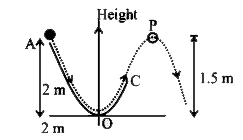Assertion : The heavier p-block element do not form strong π bonds.
Reason : The heavier elements of p-block form dπ−pπ or dπ−dπ bonds
Assertion is false but reason is true
Assertion is true but reason is false
Both assertion and reason are true, but reason is not a true explanation for assertion
Both assertion and reason are true and reason is the correct explanation for assertion
The correct Answer is:D
The presence of the d-orbitals influences the chemistry of the heavier elements in a number of other ways. The combined effect of size and availability of d-orbitals considerably influences the ability of these elements to form π bonds. The heavier elements do form π bonds but this involves d orbitals (dπ−pπordπ−dπ). As the d orbitals are of higher energy than the p orbitals, they contributes less to the overall stability of molecules than does pπ−pπ bonding of the second row elements.
Topper's Solved these Questions
Similar Questions
Knowledge Check
- Question 1 - Select One
Which of the following elements can be involved in pπ−dπ bonding ?
ACarbonBNitrogenCPhosphorusDBoron
π bond is formed by
View Solutiondπ=pπ bond present in:
View SolutionAssertion : σ-bond is strong white π -bond is a weak bond.
Reason :Atomic rotate freely about π-bond.View SolutionA particle (m = 3 kg) slides down a frictionless track (AOC) starting from rest at a point A (height 2m). After reaching C, the particle continues to move freely in air as a projectile. When it reaching its highest point P (height 1.5 m) the kinetic energy of the prarticle (in J) is : Figure drawn is schematic and not to scale , take g = 10ms−2
 View Solution
View SolutionA : Heavier elements of 14th group do not form pπ−pπ bonds .
R : Atomic orbital of heavier elements are too large and do not have effective overlapping .View Solutionpπ−pπ multiple bond is seen in
View Solutiondπ−pπ bond is present in :
View Solution
